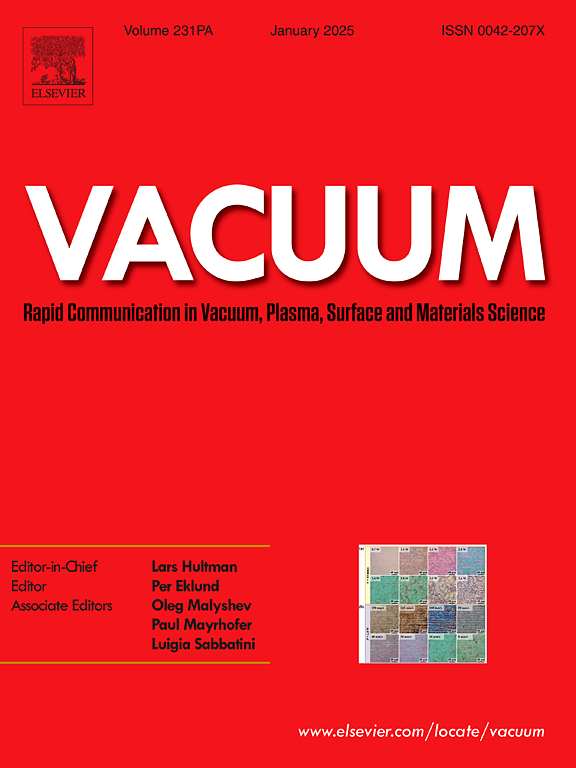Design method and working characteristics of a novel smooth rotor profile for twin-screw vacuum pumps
IF 3.9
2区 材料科学
Q2 MATERIALS SCIENCE, MULTIDISCIPLINARY
引用次数: 0
Abstract
Screw rotors, as the core components of twin-screw vacuum pumps, significantly determine their operational efficiency. The conventional cycloid-involute screw rotor suffers from problems such as an excessively large central angle, while the double-cycloid screw rotor demonstrates inferior meshing performance. In this study, two new smooth cross-sectional profiles were generated based on the screw rotor meshing principle. A "curve-plane-solid" methodology was developed for rotor generation. The geometric properties of two novel types of screw rotors were comprehensively analyzed, and compared with those of conventional cycloid-involute screw rotors and double-cycloid screw rotors. The leakage characteristics of elliptical-arc screw rotors and double-cycloid screw rotors were investigated by numerical simulation, and their performance was compared by experiments. It is found that the elliptical-arc screw rotors feature a smaller leakage volume. The simulation results were experimentally verified. The ultimate pressure of the elliptical-arc screw rotors can reach 0.9 Pa based on the novel rotor generation method. Therefore, the new type of smooth screw rotors dramatically improves the pump geometric performance, and effectively alleviates the adverse effects of the working process. The finding of present study can provide support for the application development of screw vacuum pumps.
新型双螺杆真空泵转子光滑型线的设计方法及工作特性
螺杆转子作为双螺杆真空泵的核心部件,对双螺杆真空泵的运行效率起着举足轻重的作用。传统的摆线-渐开线螺杆转子存在圆心角过大等问题,而双线-摆线螺杆转子啮合性能较差。基于螺杆转子啮合原理,生成了两种新的光滑截面。提出了一种“曲线-平面-立体”的转子生成方法。综合分析了两种新型螺旋转子的几何特性,并与传统摆线-渐开线螺旋转子和双线摆线螺旋转子进行了比较。通过数值模拟研究了椭圆圆弧螺杆转子和双摆线螺杆转子的泄漏特性,并通过实验对其性能进行了比较。结果表明,椭圆圆弧螺杆转子具有较小的泄漏体积。仿真结果得到了实验验证。基于这种新型转子生成方法的椭圆弧螺杆转子的极限压力可达0.9 Pa。因此,新型光滑螺杆转子极大地改善了泵的几何性能,有效地缓解了工作过程中的不利影响。研究结果可为螺杆真空泵的应用开发提供支持。
本文章由计算机程序翻译,如有差异,请以英文原文为准。
求助全文
约1分钟内获得全文
求助全文
来源期刊

Vacuum
工程技术-材料科学:综合
CiteScore
6.80
自引率
17.50%
发文量
0
审稿时长
34 days
期刊介绍:
Vacuum is an international rapid publications journal with a focus on short communication. All papers are peer-reviewed, with the review process for short communication geared towards very fast turnaround times. The journal also published full research papers, thematic issues and selected papers from leading conferences.
A report in Vacuum should represent a major advance in an area that involves a controlled environment at pressures of one atmosphere or below.
The scope of the journal includes:
1. Vacuum; original developments in vacuum pumping and instrumentation, vacuum measurement, vacuum gas dynamics, gas-surface interactions, surface treatment for UHV applications and low outgassing, vacuum melting, sintering, and vacuum metrology. Technology and solutions for large-scale facilities (e.g., particle accelerators and fusion devices). New instrumentation ( e.g., detectors and electron microscopes).
2. Plasma science; advances in PVD, CVD, plasma-assisted CVD, ion sources, deposition processes and analysis.
3. Surface science; surface engineering, surface chemistry, surface analysis, crystal growth, ion-surface interactions and etching, nanometer-scale processing, surface modification.
4. Materials science; novel functional or structural materials. Metals, ceramics, and polymers. Experiments, simulations, and modelling for understanding structure-property relationships. Thin films and coatings. Nanostructures and ion implantation.
 求助内容:
求助内容: 应助结果提醒方式:
应助结果提醒方式:


